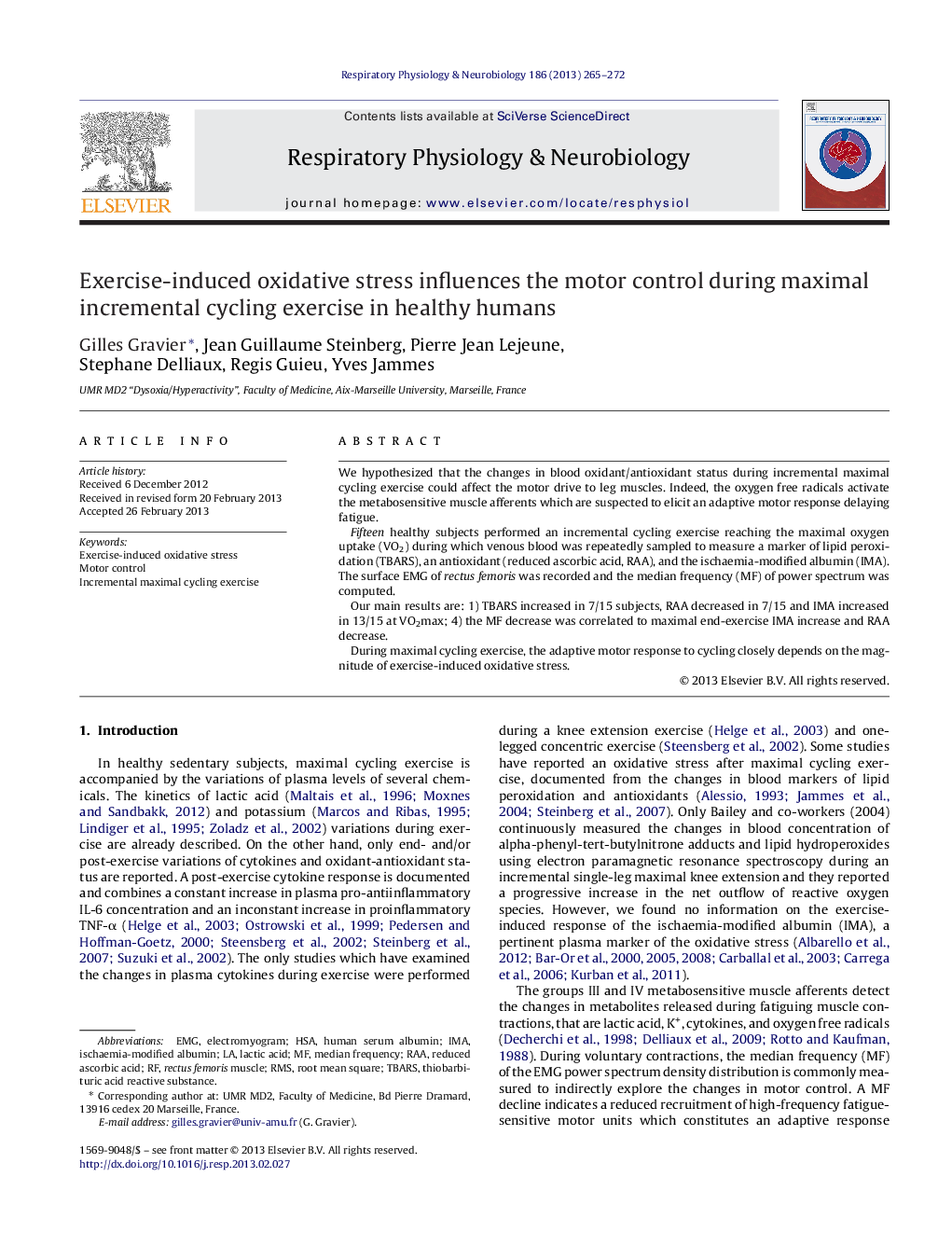| Article ID | Journal | Published Year | Pages | File Type |
|---|---|---|---|---|
| 2847258 | Respiratory Physiology & Neurobiology | 2013 | 8 Pages |
•In healthy male subjects we simultaneously measured the exercise-induced oxidative stress and surface electromyographic (EMG) response to incremental maximal cycling exercise.•We showed that the ischaemia-modified albumin (IMA) was a pertinent marker of the oxidative stress.•The exercise-induced IMA increase was correlated to the decrease in median frequency of EMG power spectrum, an index of protective mechanisms against muscle fatigue.•It seems that that the exercise-induced oxidative stress seems to bring some benefits.
We hypothesized that the changes in blood oxidant/antioxidant status during incremental maximal cycling exercise could affect the motor drive to leg muscles. Indeed, the oxygen free radicals activate the metabosensitive muscle afferents which are suspected to elicit an adaptive motor response delaying fatigue.Fifteen healthy subjects performed an incremental cycling exercise reaching the maximal oxygen uptake (VO2) during which venous blood was repeatedly sampled to measure a marker of lipid peroxidation (TBARS), an antioxidant (reduced ascorbic acid, RAA), and the ischaemia-modified albumin (IMA). The surface EMG of rectus femoris was recorded and the median frequency (MF) of power spectrum was computed.Our main results are: 1) TBARS increased in 7/15 subjects, RAA decreased in 7/15 and IMA increased in 13/15 at VO2max; 4) the MF decrease was correlated to maximal end-exercise IMA increase and RAA decrease.During maximal cycling exercise, the adaptive motor response to cycling closely depends on the magnitude of exercise-induced oxidative stress.
